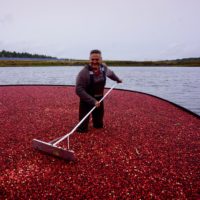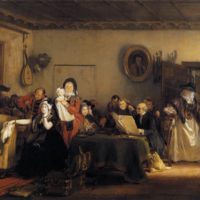New York City has announced a new (well, sort of) arts program. Hyperallergic reports: The City of New York will put some artists to work this summer with a $25 million program inspired by the New Deal’s Works Progress Administration (WPA). Announced yesterday, May 6, the recovery program will pay hundreds of local artists to beautify and activate public spaces across the city with murals, public artworks, performances, and more.The new program, called City Artist Corps, is expected to create jobs for more than 1,500 artists in NYC, a … [Read more...]
What are Learning Outcomes For?
‘Bitzer,’ said Thomas Gradgrind. ‘Your definition of a horse.’ ‘Quadruped. Graminivorous. Forty teeth, namely twenty-four grinders, four eye-teeth, and twelve incisive. Sheds coat in the spring; in marshy countries, sheds hoofs too. Hoofs hard, but requiring to be shod with iron. Age known by marks in mouth.’ Thus (and much more) Bitzer. ‘Now girl number twenty,’ said Mr Gradgrind. ‘You know what a horse is.’ The opening chapters of Dickens’ Hard Times probably have all of us recoil at the insistence of Mr Gradgrind on a school where … [Read more...]
Economic Impact: A Quick and Dirty Critique
Teaching arts policy this fall, I needed a two-page briefing to warn my students off using economic impact studies as an arts advocacy tool. Here's the result: What is an Economic Impact Study? Definitions are hard to come by. I can tell you how a number is calculated, so let’s start there. Pick a sector: it can be film production in a state, or nonprofit arts organizations, or cranberry farming, or anything. First ask: What were total sales in that sector in a state over the course of a year? That should be easy to figure – every … [Read more...]
It’s Friday, Ask Me Anything
The amazing students in our Arts Administration program at the O'Neill School at Indiana University have requested an ask-me-anything day, and so here it is. Through the day you can continue to ask questions either in the comments section here, or on Twitter, and I'll do my best. 2:30 pm What is the most valuable lesson you've learned as a parent? I'll give a list: Be as good as you can, know you will never be perfect; let children explore; recognize when you have done wrong, apologize for it, but don't dwell on it, look forward and be … [Read more...]
Strategic Planning and Muddling Through
Out in the woods for today's video, on Charles Lindblom's classic essay "The science of 'muddling through'". When an arts organization sets out to form a strategic plan, what exactly is it doing? Is a so-called 'logic model', that carefully sets out desired outcomes, and then works backwards through the most effective outputs and actions, the way we actually conceive of the problem? Or in fact is what we do in practice much more modest, taking existing activities as more-or-less given, and looking to a few changes at the margin that ought to be … [Read more...]
Voting for arts funding – a short video
We are making the adjustment to teaching arts policy at a distance for the remainder of the semester, and so I'm about to get used to (and hopefully better at) short videos for students, practitioners, anyone with an interest. In this one - I kept it to eighteen minutes - I talk about a study I did on the 2002 referendum in Metro Detroit that would have seen a property tax increase to provide funding for a number of arts organizations. It failed. In my study I took precinct-level voting data, matched the precincts to census tracts, and … [Read more...]
The wealth tax and the museum
At Bloomberg, Tyler Cowen has a short post on some unintended consequences of a wealth tax. It's an idea being talked about in the Democratic candidate debates. In the US we do have a few wealth taxes already: local property taxes, and, for the very, very wealthy, estate taxes. But a stand-alone wealth tax would be something new. Cowen has an unusual take. When the estate tax comes up for debate, whether to increase its rate and lower its threshold, or, on the other side, to eliminate it entirely, one of the issues that comes up is the … [Read more...]
Identification, please
What are the keys to success in the art world? Some combination of hard work, smart early career choices, artistic talent, access to the connected and the gate-keepers, and a bit of serendipity. The same could be said of many professions. But it's very hard to discern the relative importance of these ingredients. Research finds that those who have attained the greatest successes in creative fields tend to be more likely to think that merit is what got them there (in this they are not much different from the successful in other arenas), while … [Read more...]
What the doctor ordered
Doctors will be able to prescribe visits to the Montreal Museum of Fine Art for their patients, reports the Gazette: Doctors will each be able to assign up to 50 museum prescriptions over the course of the pilot project. Each prescription will allow entry for up to two adults and two children age 17 or under. “There’s more and more scientific proof that art therapy is good for your physical health,” said Dr. Hélène Boyer, vice-president of Médecins francophones du Canada and the head of the family medicine group at the CLSC … [Read more...]
Back to school – a cultural planning syllabus
So after a stretch in university administration, I am back full-time in the classroom this fall. One of my classes is in Cultural Planning and Community Development - i.e. "place-based" cultural policy - and though I've taught bits and pieces of the subject here and there, have never had the course actually assigned to me until now. So, this is what I've put together. It's a lot of reading, with some preliminaries on what's going on in the economy right now (since I don't think anyone can do "placemaking" policy without a good understanding … [Read more...]









